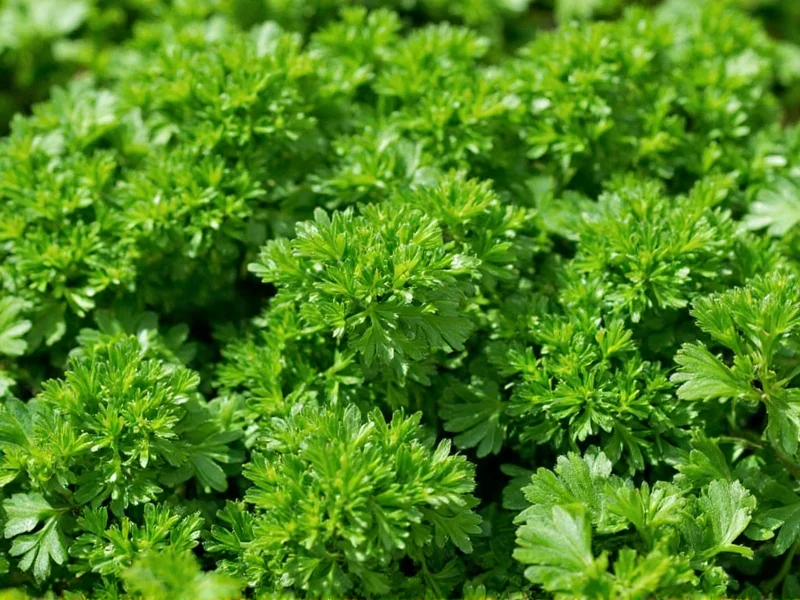3 tablespoons of fresh parsley equals 1 tablespoon of dried parsley. This 3:1 ratio accounts for the water content difference between fresh and dried herbs, with dried parsley being more concentrated in flavor.
When adapting recipes, understanding the fresh parsley to dry equivalent conversion is essential for achieving balanced flavors. The standard culinary ratio of 3:1 (fresh to dried) exists because fresh parsley contains approximately 85-90% water, while the drying process concentrates the herb's essential oils and flavor compounds.
Why the 3:1 Fresh to Dried Parsley Ratio Works
The science behind herb conversion lies in moisture content. Fresh parsley's high water content dilutes its flavor profile compared to its dehydrated counterpart. When you remove moisture through drying, the remaining plant material becomes more potent. This concentration effect means you need less dried parsley to achieve similar flavor intensity.
Chefs and food scientists confirm that most leafy herbs follow this 3:1 conversion principle, though exceptions exist for more delicate herbs like basil or cilantro which may require slightly different ratios due to their volatile oil composition.
Practical Substitution Guide for Cooking
When substituting dried for fresh parsley in your recipes, consider these practical guidelines:
| Measurement | Fresh Parsley | Dried Parsley Equivalent |
|---|---|---|
| Teaspoons | 3 tsp | 1 tsp |
| Tablespoons | 1 tbsp | 1 tsp |
| Cups | 1 cup | 1/3 cup |
| Handful (approx.) | 1/4 cup packed | 1.5 tbsp |
Flavor Profile Differences to Consider
While the fresh parsley to dry equivalent conversion provides a good starting point, remember that dried and fresh parsley offer distinct flavor experiences:
- Fresh parsley delivers bright, grassy notes with subtle peppery undertones and higher chlorophyll content
- Dried parsley develops earthier, more concentrated flavors with slightly diminished volatile compounds
- Dried versions lose some of the delicate top notes found in fresh varieties
For best results in cooked dishes, add dried parsley early in the cooking process to allow rehydration and flavor dispersion. Fresh parsley works best as a finishing herb added just before serving to preserve its vibrant flavor and color.
Storage Impact on Conversion Accuracy
The age and storage conditions of your dried parsley significantly affect its potency. Properly stored dried parsley maintains optimal flavor for 6-12 months. After this period, you may need to increase the amount slightly to compensate for flavor degradation.
Store dried herbs in airtight containers away from light and heat. Fresh parsley keeps best when stored upright in water (like flowers) in the refrigerator, covered with a plastic bag for 1-2 weeks.
Common Substitution Mistakes to Avoid
Cooks often make these errors when converting between fresh and dried parsley:
- Using equal measurements without adjusting for concentration
- Adding dried parsley at the same stage as fresh in recipes
- Not accounting for the age of dried herbs
- Using the same conversion ratio for all herbs (some require 4:1 ratios)
When precision matters, especially in delicate sauces or dressings, consider starting with 25% less dried parsley than the conversion suggests, then adjusting to taste. Remember that dried herbs benefit from brief toasting before use to revive their aromatic compounds.
When Not to Substitute
Certain dishes simply require fresh parsley for their intended effect. Garnishes, chimichurri, tabbouleh, and herb-centric sauces rely on fresh parsley's texture and bright flavor that dried versions cannot replicate. In these cases, seek alternatives rather than forcing a substitution.
Understanding the fresh parsley to dry equivalent conversion gives you flexibility in the kitchen while maintaining recipe integrity. This knowledge proves particularly valuable when you're mid-recipe and discover you're out of one form of this essential herb.











 浙公网安备
33010002000092号
浙公网安备
33010002000092号 浙B2-20120091-4
浙B2-20120091-4